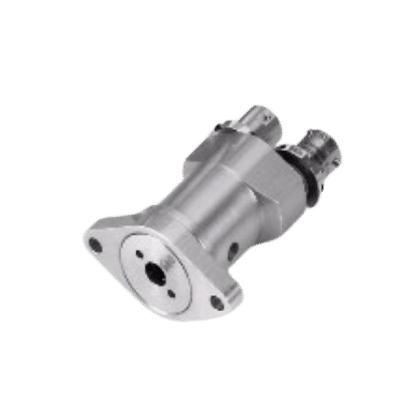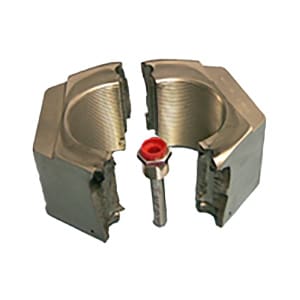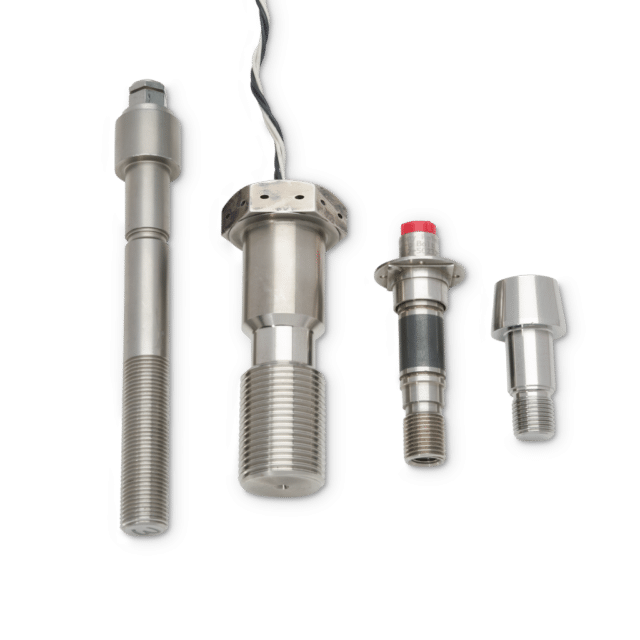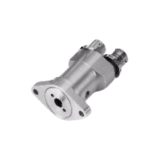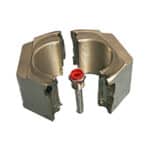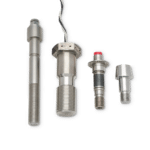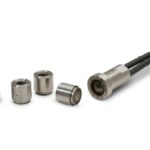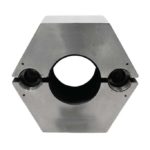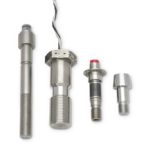Hold Down Release Mechanisms
A hold down and release mechanism (HDRM) is a critical component in the aerospace industry, designed to securely hold and precisely release various elements of aircraft and spacecraft during different phases of operation. At PacSci EMC, we specialize in manufacturing pyrotechnic HDRMs that utilize controlled energetic charges for rapid and reliable release. These mechanisms are essential for applications requiring immediate and decisive action, such as the deployment of satellite payloads, separation of rocket stages, and release of critical equipment during missions.
Pyrotechnic HDRMs offer high reliability and speed, making them ideal for high-stress environments where precision and timing are crucial. This makes them the preferred choice for scenarios demanding rapid and fail-safe operation.
Commonly used names include hold down and release mechanism, separation mechanism, separation devices, explosive bolts, separation bolts, separation nuts, explosive nuts, and frangible nuts.
Our Hold Down Release Mechanisms
Key Features
How a Hold Down Release Mechanism Works
An electrical input applied to an HDRM starts the energetic train to nearly instantaneously initiate the release process. Depending on the HDRM type:
• A bolt may fracture into two pieces.
• A separation nut may release.
A frangible nut may break into multiple pieces to release the payload.
Listen to our HDRM podcast learn more.
Applications
Hold down and release mechanisms (HDRMs) play a pivotal role in a variety of specialized aerospace applications, making them indispensable for mission-critical operations. Key applications include:
• Satellite Deployment: Ensuring secure attachment during launch and precise release into orbit without tip-off.
• Rocket Stage Separation: Ensuring each stage is released at the exact moment required for optimal trajectory and propulsion.
• Scientific Payloads and Probes Deployment: Timing and reliability are paramount for deep space missions.
• Spacecraft Appendages Deployment: Ensuring solar arrays, antennas, and other appendages unfold correctly once in space.
Their ability to function flawlessly under extreme temperatures, high vibrations, and zero-gravity conditions makes HDRMs a trusted choice for aerospace engineers and mission planners. At PacSci EMC, our explosive HDRMs meet these demanding requirements to ensure mission success.
Specifications
Common Design Criteria and Test Method Defining Documents
Standards ensuring reliable design include:
• MIL-STD-810: Environmental test methods.
• MIL-STD -461: Electromagnetic interference compatibility.
• MIL -STD -1576: Reliability of explosive components.
• NASA -STD -1000: Space hardware requirements.
• E CSS-Q -ST -70: European space mission standards.
Other relevant standards include AS9100 for quality management systems specific to aerospace; MIL-DTL -23659 covering electro-explosive devices; SAE AS8043 guidelines for pyrotechnic devices.
Specification Questions
Design Considerations for Hold Down and Release Mechanisms
When designing an HDRM or any other aerospace hold down and release mechanism, consider the following factors:
Configuration Envelope
• Output/Input Thread Size
• Overall Length
• Total Mass
• Connector Pin Quantity
• Number of Circuits
• Pin Grounding to Body
• Cable/Connector Specifications
Environment Capabilities
• Operating Temperature Range
• Shock Levels
• Vibration Levels
Electric Properties
• Insulation resistance
• Dielectric withstanding voltage
• Circuit resistance
• Electrostatic discharge (ESD)
Performance Characteristics
• All-fire capability
• No-fire capability
• Cable/connector pull strength
• Tensile strength
FAQ's
-
What is a hold down release mechanism?
A Hold Down Release Mechanism (HDRM) is used in space missions to securely hold components like satellites or solar panels during launch. Once in space it releases these components at precise moments ensuring proper deployment.
-
How do separation nuts work?
Separation nuts are pyrotechnic devices that fasten components together during launch. When activated by an explosive charge inside they split apart releasing connected components allowing controlled separation.
-
How do separation bolts work?
Separation bolts use small explosive charges inside causing them to fracture or split upon activation ensuring controlled release of parts like satellite payloads or rocket stages.
-
Benefits of a pyro vs NEA release
Pyro mechanisms provide rapid reliable releases ensuring precise timing which is simpler more compact reducing mechanical failure risk compared to NEA mechanisms.
